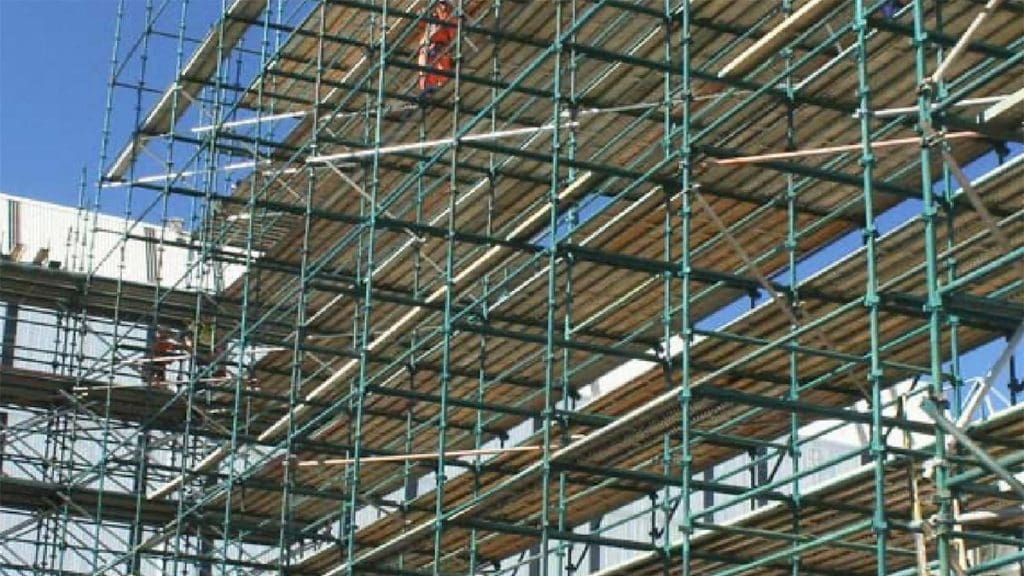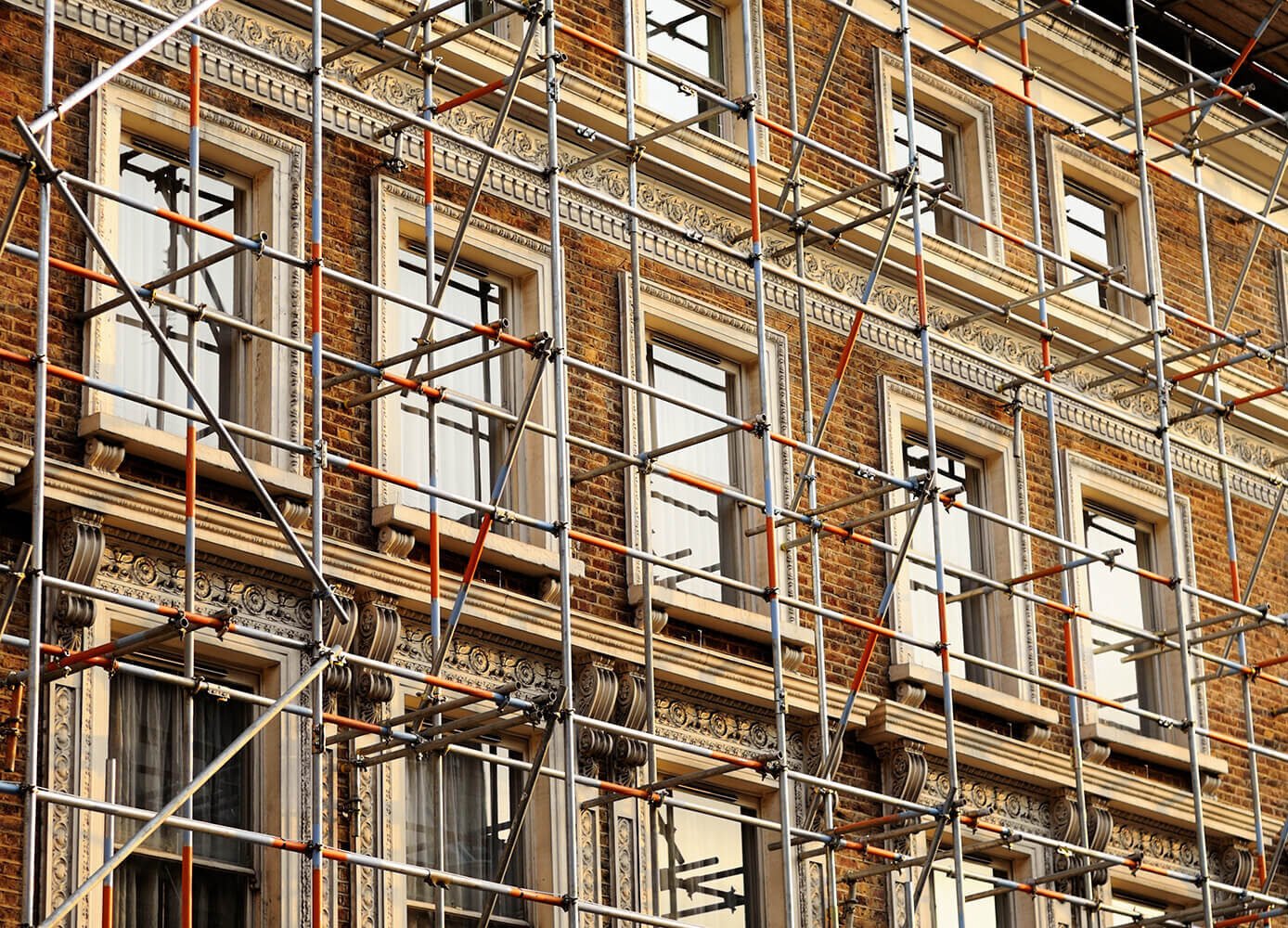Discovering the Numerous Sorts Of Scaffolding Utilized in Construction Jobs
The building and construction sector relies greatly on various sorts of scaffolding to meet particular project requirements, each offering distinctive benefits and applications. Typical structure scaffolding gives a strong structure for general tasks, while suspended scaffolding is crucial for service skyscraper frameworks. Various other alternatives, such as system and rolling scaffolding, accommodate effectiveness and mobility, respectively. The cantilever alternative shows important in city settings where area is constrained. Recognizing the subtleties of these scaffolding types is crucial for maximizing safety and security and performance on building sites, triggering a closer assessment of their unique qualities and applications.

Standard Framework Scaffolding
Standard framework scaffolding is among one of the most widely utilized approaches in the building and construction market due to its robustness and convenience. This system contains vertical and straight structures that are assembled to develop a secure platform for products and employees. The primary parts include upright blog posts, straight journals, and diagonal braces, which together give a strong framework that can sustain significant loads.
Among the vital benefits of standard structure scaffolding is its flexibility to various building tasks, varying from residential structures to big business structures. The modular layout enables easy assembly and disassembly, making it reliable for both temporary and long-lasting jobs. In addition, the system can be personalized in elevation and width, fitting various building styles and website problems.
Safety and security is critical in scaffolding applications, and conventional frame systems are equipped with guardrails and toe boards to stop falls and make sure employee protection. Normal examinations and adherence to security guidelines are crucial in maintaining the integrity of the scaffold (Scaffolding). On the whole, traditional framework scaffolding remains a basic choice in the building sector, offering a dependable platform for labor and improving general task efficiency

Suspended Scaffolding
Put on hold scaffolding uses an one-of-a-kind solution for building and construction jobs that require access to elevated surface areas, especially in situations where conventional frame scaffolding might be unwise. This sort of scaffolding is generally put on hold from the roofing or upper degrees of a framework, making use of a system of platforms, ropes, and wheels to create a working space that can be readjusted to numerous elevations.
One of the key advantages of put on hold scaffolding is its adaptability. It can be quickly rearranged or lowered to suit adjustments in building and construction requirements, making it perfect for jobs such as window installment, façade job, and maintenance on skyscrapers. In addition, the minimal footprint of put on hold scaffolding permits better usage of ground area in urban settings, where space is commonly minimal.
Security is an essential consideration in the use of suspended scaffolding. In general, suspended scaffolding provides a reliable and reliable option for accessing hard-to-reach areas in different building and construction circumstances, boosting both efficiency and security on site.
System Scaffolding
System scaffolding, commonly related to as a contemporary remedy in the scaffolding sector, is composed of pre-engineered elements that can be promptly assembled and adjusted for numerous building and construction jobs. Scaffolding. This kind of scaffolding is characterized by its modular layout, which enables adaptability and effectiveness on task sites, fitting structural demands and different elevations
Typically made from high-strength steel or light weight aluminum, system scaffolding supplies enhanced sturdiness and stability. The parts include vertical posts, straight journals, and angled dental braces, which interconnect securely, making sure a durable structure. The design frequently integrates standardized installations, simplifying setting up and disassembly processes, therefore reducing labor weblink time and expenses.

Rolling Scaffolding
Rolling scaffolding is a flexible option to standard set scaffolding, designed for movement and convenience of usage on building and construction websites. This kind of scaffolding contains a platform supported by structures with wheels, permitting workers to quickly relocate it as required. The mobility function substantially improves efficiency, as it reduces downtime related to taking apart and assembling fixed scaffolding.
Typically constructed from light-weight products such visit site as aluminum or steel, rolling scaffolding provides a sturdy yet mobile option for jobs requiring constant repositioning - Scaffolding. It is specifically useful in jobs such as painting, drywall installment, and electric job, where access to various elevations and places is required
Safety is extremely important in rolling scaffolding style, with features such as securing wheels to stop unintentional activity when in use, and guardrails to shield employees from falls. Additionally, lots of models are adjustable in elevation, accommodating numerous project demands.
Cantilever Scaffolding

The design of cantilever scaffolding usually involves utilizing arms or brackets anchored to a structure or framework, allowing the platform to expand outside securely. Safety is critical; thus, these scaffolds should be crafted to stand up to environmental conditions and numerous lots. Regular inspection and upkeep are find this vital to make certain architectural stability and employee security.
Cantilever scaffolding is preferred for its convenience and reliable use room, making it a preferred option in urban environments where room constraints are usual. Additionally, it helps with less complicated accessibility to high elevations, inevitably adding to the general effectiveness of construction tasks. As with all scaffolding types, correct training and adherence to security requirements are crucial for employees utilizing cantilever scaffolding.
Verdict
Traditional framework scaffolding offers security, while put on hold scaffolding supplies convenience for elevated tasks. System scaffolding helps with fast setting up, and rolling scaffolding boosts mobility for varying work atmospheres.
Typical structure scaffolding gives a sturdy foundation for basic jobs, while put on hold scaffolding is crucial for job on skyscraper frameworks.Moving scaffolding is a versatile option to traditional fixed scaffolding, designed for flexibility and convenience of usage on construction sites. As with all scaffolding kinds, appropriate training and adherence to security requirements are essential for employees using cantilever scaffolding.
Conventional frame scaffolding offers stability, while suspended scaffolding supplies adaptability for elevated jobs. System scaffolding assists in quick setting up, and rolling scaffolding improves movement for varying job environments.
Comments on “Scaffolding Guildford: The Best Option for Your Building and Renovation Projects”